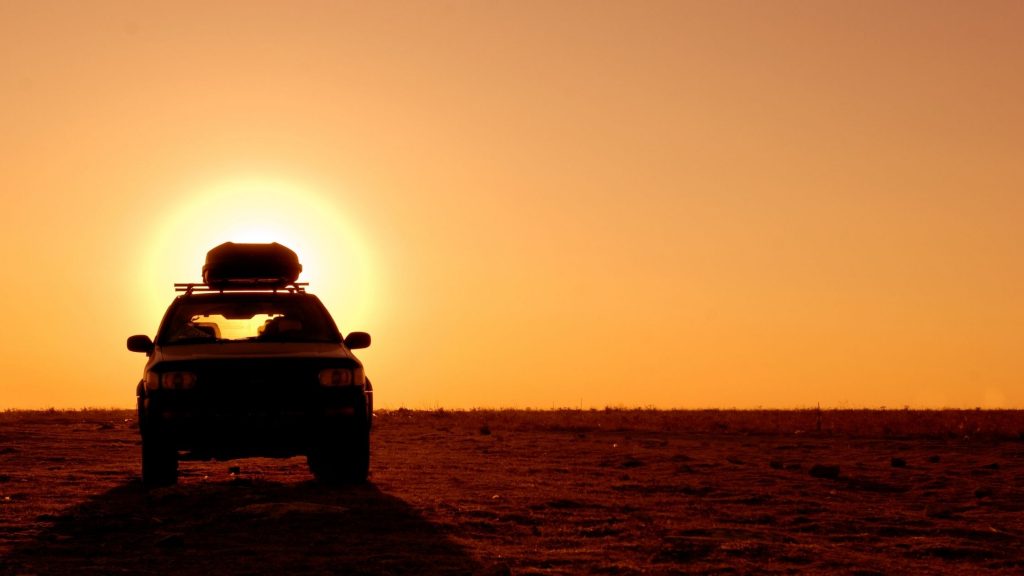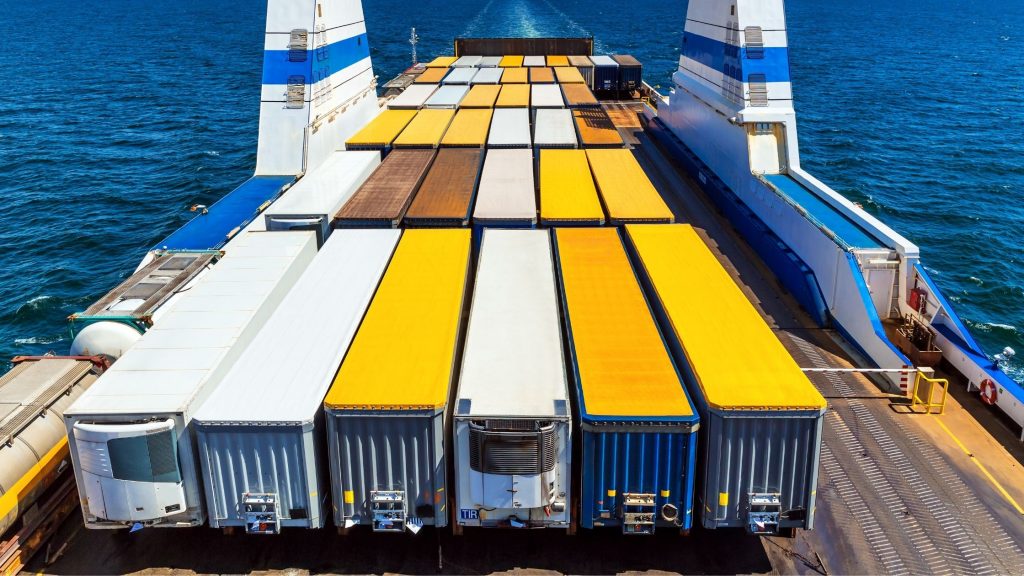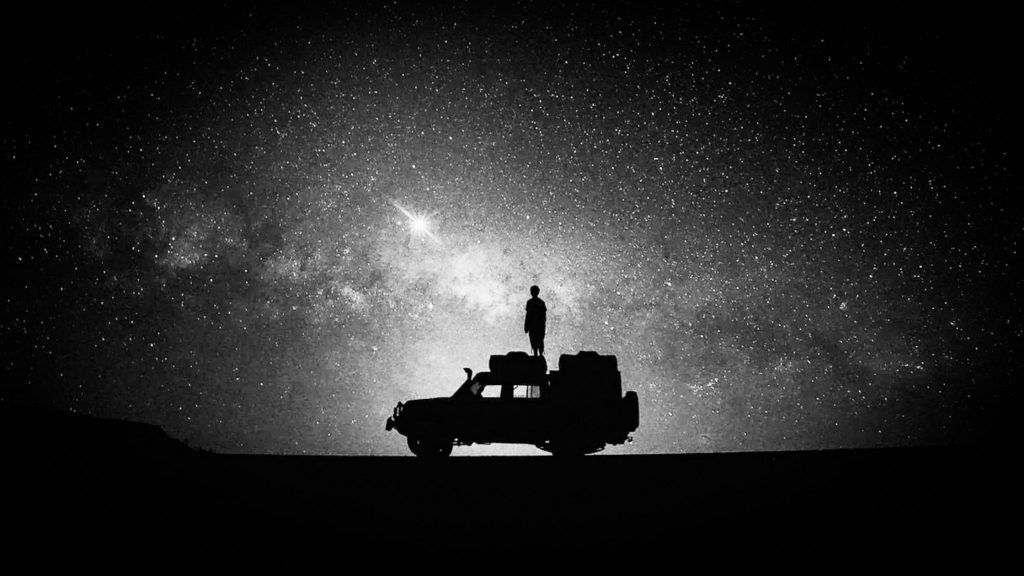Say you have your rig ready, your dogs, and your kitchen packed. You got your passport, and you picked your destination as well.
Nothing is going to stop you now. But have you thought about insurance?
While getting your daily ride insured is a thing you do without overthinking it, you also have to think about insuring your rig for overlanding.
Have you ever thought if your insurance company covers the country you will take your overland vehicle to? Does it cover traveling off-road?
That could be a deal-breaker, but it doesn’t have to if you are prepared.
Let’s look into overland insurance a little bit closer.
What is overland insurance?
Overland insurance is nothing else like international insurance. It’s a type of car insurance that covers you while you take your vehicle abroad.
Often your domestic insurance policy won’t cover you due to territory constraints. International car insurance will keep you protected during your adventures in case of collision, theft, or physical damage.
You can purchase international/overland insurance from your insurance company. There is a catch to it, though.
Unfortunately, international auto insurance is more expensive than your domestic one. That’s because when you drive abroad, you are in a new territory, and you are subjected to different laws that you are not accustomed to.
It means you are a high-risk driver.
There is a solution to it. It requires a little bit more legwork and planning but can save you some money in the long run.
Off-road Protection

You generally get off-road car insurance as add-on “coverage” to your auto insurance. It covers your vehicle when you drive it off-road too. It very rarely gets included in the basic insurance coverage very rarely.
For insurers, the general “off-road” includes travel on non-public roads like unmarked areas, gravel, and the usual high-risk roads off-roaders like to travel on.
Does full coverage cover off-road? It depends on the insurer’s policy. There are usually exclusions as to under what circumstances you will be covered and not covered.
The only way is to ask your insurance representative clearly and look for the words in the agreement. The main goal of insurance companies is to make profits, so it’s only fair to admit that they’ll try to cover as little as possible.
Ask questions. If the agent says that off-road is covered, let it be as it is. In case the person was wrong, you’ll still have the “Errors and Omissions” policy to cover you for wrong information from the agent.
Every insurance company has its own set of policies. This is what a typical off-road coverage in automobile insurance may cover;
Common Insurance for Overlanding
Collision Coverage
If your vehicle hits a tree or another vehicle, this will cover your vehicle’s total cost of repairs.
Bodily Injury Liability
Suppose you are in an accident and are liable for another person’s injury; bodily injury liability will cover the injured individual’s medical expenses. This is important as healthcare is not that cheap in many countries, especially if you’re in the U.S.
Property Damage Liability
This is also similar to the previous liability. Suppose you are liable for damaging another individual’s property, such as a vehicle or belonging in an accident; property damage liability will cover the cost of repairs. It can be any physical property of another individual; a building, land, vehicle, etc.
Comprehensive Coverage
The comprehensive coverage is usually optional. This will cover the loss incurred if your vehicle gets stolen or damaged by causes other than a collision, like a natural calamity.
In simple terms, anything besides a collision will come under comprehensive coverage. Comprehensive coverage can be beneficial in unexpected events like rollovers and damage to parts of the vehicle.
Are my off-road mods and contents covered too?
Under an off-road coverage policy, the main property covered is your vehicle. Of course, when we prepare for an overland trip, additional upgrades and modifications like off-road suspension, roof racks, and locking differentials are added to the rig to make it more overland/off-road capable.
In case something goes wrong with the mods while you’re off-road, is that covered under your off-road policy?
Are the contents inside the vehicle covered too? Your overland vehicle is essentially your only home for the next few months, so it consists of valuable accessories like cooking utilities, storage containers, tent, and mattress, etc.
The only way to find out is by asking these questions to your insurer BEFORE estimating the premiums for off-road insurance.
In response, you’ll be asked to send documents of proof in the form of pictures, videos, and receipts. And this will have to be done on a regular basis, approximately 3 months, but it differs from insurer to insurer. This will be a sort of “recorded proof” for the insurance company.
So the next time you purchase add-ons for your rig, make sure to keep the bills in place.
Personal Belongings
Full-coverage travel insurance covers your personal belongings too. That means if any of your gear, bags, or devices are stolen or damaged, you can claim its value through the insurer.
Sometimes, even with full coverage, the policy will mention that it only covers the things in the vehicle that come from the factory – excluding aftermarket upgrades and personal belongings.
In that case, full-coverage travel insurance would cover your personal belongings under the home owner’s insurance policy.
With home owner’s insurance, the loss incurred due to damage or theft of personal belongings can be reimbursed no matter which corner of the world you’re in.
What is covered under personal belongings?
It includes all sorts of personal valuables and accessories like gears, bags, jewelry, money, clothing, electronic devices like mobile phones, video cameras, telescope, debit/credit cards, tickets, health supplies, and equipment and perishable goods like consumables.
The only circumstances where you can get covered for these personal belongings are when they are either damaged by fire or stolen. Personal belongings that have were lost due to misplacement in public places, or accidentally broken will not be reimbursed for their value.
Even if they do get stolen or damaged, there is usually a certain limit your insurer will pay for. That maximum limit will be clearly specified in the policy.
Book Value and Built Value
Any aftermarket upgrade or modification made to your overland vehicle should be an add-on to the insurance policy. This way, the insurance amounts can be calculated based on the dollar value of the modification attached to the vehicle and get covered for it too.
Otherwise, it will just be your vehicle’s book value, and you will not get reimbursed for loss or damage to the pricey aftermarket mods.
For that, you’ll probably need to get full coverage (for the factory vehicle value), the aftermarket add-ons, and theft insurance for personal belongings if they are not covered under home owner’s or personal contents/belongings insurance.
In case, reimbursements are to be made, you will need to submit some sort of documentation like photos, videos, or receipts to show proof and then claim it. So keep your cameras at hand!
All insurance companies will only reimburse you after you pay the deductibles, let it be for personal items or off-road. So be sure to understand the calculations for such deductibles thoroughly before agreeing to the contract.
When to get overland insurance
It is always good to look into car insurance in another country before driving in that country.
Car insurance in varied countries has different laws depending on where you are. Contacting foreign car insurance firms may assist in the clarification of international laws and regulations.
Which country vehicle insurance is not required
Countries around the world divide into three categories if it comes to insurance requirements:
- Insurance not required: Some countries do not require drivers to have vehicle insurance. Likely, in case of an accident, you are on your own.
- Insurance is mandatory: You have to purchase local vehicle insurance to travel on public roads in the country legally. Usually, it’s immaterial if you have insurance from your home country.
- International insurance: The country accepts the insurance you have purchased from your domestic insurer, as long as that insurance covers you in that country.
Not all states in the US require you to have car insurance, like New Hampshire and Virginia, but that doesn’t mean you are not liable for any damage you may cause during an accident.
The same principle applies in some other countries, like New Zealand, Guatemala, Ecuador (for international vehicles), and New South Wales in Australia (CTP for foreign vehicles).
Marine Cargo Insurance

If you plan on shipping your Overlanding rig overseas, you would have to consider another type of Overland insurance as well.
It’s called Marine Cargo Insurance, and it is the insurance of your property when it travels from one place to another.
Even though it’s called “Marine,” insurance can cover all your belongings even when transport is conveyed by plane, train, or on the road.
Price of overland insurance
It’s challenging to foresee overland insurance costs. They all depend on the vehicle, the driver, duration of insurance, coverage, etc.
We gathered a few pointers for you as a guide, and by no means are they accurate to a single $1, but they may give you an idea of what you are looking at when planning your Overlanding trip.
In South America, the MERCOSUR insurance could cost around $100 for three months. The prices may vary depending on the company.
Arriving in Colombia, you can purchase insurance for the whole duration of your stay. You can start with one month and then extend it as you go throughout the country. Three months of third-party insurance could cost you around $90.
In Central America, buying insurance at each border may cost between $10 and $15. It usually covers you for your car import permit duration, around 30-90 days, depending on the border officials.
Driving between ECOWAS countries requires you to pay around $45 per month at each border you cross.
Countries in Central Asia are not very expensive. The average price you have to be ready to spend per month for your overland insurance would be between $20 – $50.
Traversing Georgian roads with insurance would cost you $15 per month. You also have an option of buying insurance for 15 and 90 days or the whole year. The longest period could cost you around $90.
Mongolian overland insurance cover for 30 days of driving in the country may cost you more or less $30.
In Armenia, you could pay some $25 for month insurance.
Types of insurance around the world
Going the route of purchasing local insurance in each country you are entering can be time-consuming but ultimately can save you from breaking the bank.
The most common and required in most countries around the world is Third Party Insurance.
In different countries, it has other names. Still, the principle is generally the same: It protects the vehicle owner and anyone who drives the vehicle from allegations of responsibility for death or injuries to others caused by the vehicle owner’s or driver’s negligence.
Some countries (states or provinces) have insurance covered by private companies (third parties). Others provide public insurance through a government-owned system.
South America
In countries that belong to MERCOSUR, there is an option to buy one type of insurance covering your travels between their borders.
It’s called simply MERCOSUR insurance, and it covers Chile, Argentina, Paraguay, Uruguay, and Brazil. It can be extended to cover Bolivia and Peru as well.
Other countries in South America: Colombia, Guyana, Suriname, and Venezuela are not covered by MERCOSUR. They require you to buy separate 3rd party insurance (usually called SOAT).
French Guyana belongs to the EU, so overland insurance there would come under Green Card.
Central America
Most countries in Central America offer mandatory 3rd party coverage at the border. With the exception of Guatemala, where car insurance is not required.
North America
In Canada, you have to get non-resident inter-provincial 3rd party liability car insurance if you plan on visiting multiple provinces.
You can purchase it from a Canadian broker.
Not all states in the U.S. require you to have insurance for your vehicle, but it’s best to have it nonetheless. The required coverage in most states would be the well-known liability car insurance.
It’s possible to buy it from insurance companies in the U.S. Different states would have different purchasing requirements, but insurance would be valid throughout the country.
East and South Africa
Insurance called Yellow Card can cover all countries belonging to COMESA (Burundi, Ethiopia, Kenya, Rwanda, Swaziland (Somalia), Tanzania, Uganda, Zambia, and Zimbabwe).
You can typically purchase yellow card insurance at any car insurance broker in COMESA country.
West Africa
In countries belonging to ECOWAS, insurance is covered under Brown Card.
Seventeen countries belong to ECOWAS: Benin, Burkina Faso, Cabo Verde, Cameroon, Congo, Gambia, Ghana, Guinea, Guinea-Bissau, Ivory Coast, Liberia, Mali, Niger, Nigeria, Senegal, Sierra Leone, Togo.
The insurance under Brown Card can be purchased at any broker working within the ECOWAS region.
Middle East
As a part of the International Motor Insurance Card System, the Orange Card is an arrangement between authorities and insurance organizations in Arabian Peninsula.
The Orange Card was established between members of the Arab League and is relevant primarily in the Middle East and North Africa.
Participants are Algeria, Bahrain, Egypt, Iraq, Jordan, Kuwait, Lebanon, Libya, Mauritania, Morocco (Green Card), Oman, Qatar, Saudi Arabia, Somalia, Sudan, Syria, and Tunisia (Green Card), the United Arab Emirates and Yemen.
Australia
Visiting the Land Down Under with your vehicle, you need to insure it with CTP (Compulsory Third Party) insurance. You can purchase it from most of the insurance organizations in the country.
New Zealand
Vehicle insurance is not compulsory in New Zealand, but it is recommended. You can purchase it from insurance companies in the country.
Europe
Europe is a little bit tricky situation. There is a multitude of countries in Europe, but not all of them belong to European Union.
The insurance rules could be slightly different in EU vs. non-EU countries, but regardless of that, all European countries require a minimum of liability insurance. On the old continent, it’s called a Green Card.
The Green Card covers you in all EU member states and Albania, Andorra, Azerbaijan, Belarus, Bosnia-Herzegovina, Croatia, Gibraltar, Iceland, Iran, Israel, Liechtenstein, Macedonia, Moldova, Monaco, Montenegro, Morocco, Norway, Russia, San Marino, Serbia, Switzerland, Tunisia, Turkey, Ukraine, and the United Kingdom.
Green Cards are not available for Kosovo, and therefore you need to purchase your car insurance at the border.
Central Asia
In the states of Central Asia, car insurance is called OSAGO, which translates to Compulsory Civil Liability Insurance for Vehicle Owners. (Kazakhstan, Kyrgyzstan, Tajikistan, Turkmenistan, and Uzbekistan), and you can easily buy car insurance on the border.
You have to be careful, though. Sometimes border patrol doesn’t check the insurance, but that doesn’t mean it’s not mandatory!
The general rule by most overlanders is not to buy in “the first booth.” Try to look around for the best deal.
Southeast Asia
The Blue card system is established between the Association of Southeast Asian Nations (ASEAN) members and is applicable in South East Asia.
The Blue Card is valid on the roads in Brunei, Cambodia, Laos, Malaysia, Myanmar, Indonesia, Philippines, Thailand and Vietnam, Singapore.
East Asia
In China, there are two types of mandatory car insurance.
The first one is compulsory vehicle insurance. It has, however, minimal financial coverage, and you would do best to check the exact amount.
The second one is commercial insurance, which covers all related claims not covered by the compulsory vehicle insurance.
Japanese law requires you to have what they call Compulsory Automobile Liability Insurance (CALI).
Although CALI is effective, it is insufficient to provide coverage for the insured, property damage to third parties. It does not cover any repair or replacement for damage to the vehicle itself.
In Mongolia, the insurance can be bought at the police stop after crossing the border.
Driving in North Korea is going to be quite tricky, if not impossible. Owning a car there is considered a symbol of status, and in most cases, it is not possible to bring your vehicle into the country. There is no info about the insurance.
South Korea has it easy enough. You can buy the insurance online from companies that have been approved by the Korean government, including foreign companies from abroad.
Taiwan accepts international car insurance, but you can also purchase Compulsory Motor Liability Insurance. CMLI is different than most insurances you have contact with due to the high risk of driving in the country.
West Asia
In Armenia, insurance called CMTPL (Compulsory Motor Third Party Liability Insurance) is required to drive legally on the roads. You can buy it at the border, or if you want to save some money, there are cheaper versions online called e-CMTPL.
In Georgia, the insurance is called CIP (Compulsory insurance policy) and is required by all vehicle drivers.
Conclusion
As you can see, overland insurance is quite a challenge. But if you go about it with thought and planning, there is nothing to be afraid of.
The same type of insurance covers most countries, but if the topic gives you a headache, you can always consult your options with the insurance agency.
There is plenty of companies that would be willing to insure your vehicle under international insurance policy around the globe.
We tried our best to help you out in this part of your Overlanding adventure, and although the info doesn’t include the whole globe, we hope you get a feel for what’s there and won’t get discouraged.
Safe travels!
- Tips and tricks For Setting Up Camp Like a Pro - September 11, 2023
- The Best Multi-Tools for Overlanding Adventures - August 25, 2023
- Off-Road Navigation Tips for Overlanders - August 13, 2023


